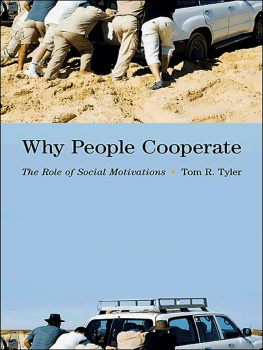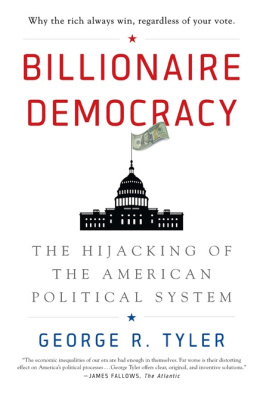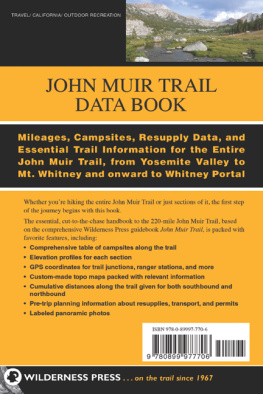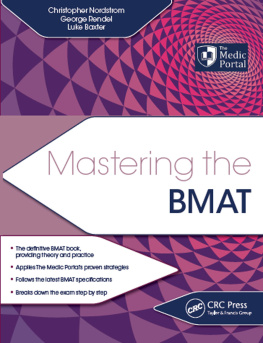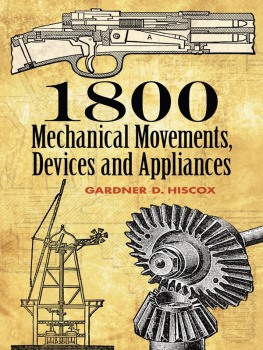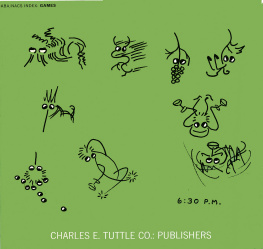Tyler - Historic Preservation
Here you can read online Tyler - Historic Preservation full text of the book (entire story) in english for free. Download pdf and epub, get meaning, cover and reviews about this ebook. year: 2018;2011, publisher: W. W. Norton & Company, genre: Politics. Description of the work, (preface) as well as reviews are available. Best literature library LitArk.com created for fans of good reading and offers a wide selection of genres:
Romance novel
Science fiction
Adventure
Detective
Science
History
Home and family
Prose
Art
Politics
Computer
Non-fiction
Religion
Business
Children
Humor
Choose a favorite category and find really read worthwhile books. Enjoy immersion in the world of imagination, feel the emotions of the characters or learn something new for yourself, make an fascinating discovery.
Historic Preservation: summary, description and annotation
We offer to read an annotation, description, summary or preface (depends on what the author of the book "Historic Preservation" wrote himself). If you haven't found the necessary information about the book — write in the comments, we will try to find it.
Historic Preservation — read online for free the complete book (whole text) full work
Below is the text of the book, divided by pages. System saving the place of the last page read, allows you to conveniently read the book "Historic Preservation" online for free, without having to search again every time where you left off. Put a bookmark, and you can go to the page where you finished reading at any time.
Font size:
Interval:
Bookmark:

HISTORIC PRESERVATION
HISTORIC
PRESERVATION
AN INTRODUCTION TO ITS HISTORY,
PRINCIPLES, AND PRACTICE

THIRD EDITION

Norman Tyler
Ilene R. Tyler . Ted J. Ligibel

W. W. NORTON & COMPANY
INDEPENDENT PUBLISHERS SINCE 1923
NEW YORK LONDON

Stephanie Meeks
President and CEO, National Trust for Historic Preservation
A half century after the passage of the National Historic Preservation Act, and nearly a quarter century after the first publication of this volume, the preservation movement in America has reached a moment of full creative flower. All over the country, communities are working to save an ever-expanding list of cherished and important places. In small towns and large cities, mayors, developers, and urban planners have embraced preservations proven potential for revitalizing historic neighborhoods and Main Streets. Preservationists are working to broaden and deepen our understanding of the American past and finding innovative ways to describe it that do justice to all our citizens, past and present. Millennials, the largest and most diverse generation in American history, are more interested in that history, and more supportive of historic preservation, than any generation before them. And, while working to preserve the past, our field is also looking to the futureembracing new technologies and confronting twenty-first-century challenges such as urban affordability and accelerating climate change.
This book is both a testament to and, in its own way, an instigator of this exciting chapter in the preservation story. When it was first published in 1994, Norman Tylers Historic Preservation: An Introduction to Its History, Principles, and Practice filled a vital need for the field. In clear, inviting, jargon-free prose, it providedand continues to providea concise, readily understandable summary of the principles, practices, tools, and techniques of our work.
Whether one is interested in policy and law, urban revitalization, architectural design, or just how to go about saving a historic place, this book has served for more than two decades now as a handy reference guide and gateway into the world of preservation. I can also affirm that it remains an important continuing resource for preservation practitioners: many a desk at the National Trusts headquarters in the Watergate complex in Washington, D.C., has a much-perused copy nearby.
With the third edition, Norm and cowriters Ilene R. Tyler and Ted J. Ligibellike good preservationistshave continued to expand on the strong foundation of the original book while retaining its many strengths and essential character. This new edition captures much of the excitement pervading historic preservation today, especially among the young generation of activists now leading the way in restoring vibrant, sustainable, affordable, and walkable communities through the power of saving places.
In addition, this revised edition ably addresses many of the contemporary frontiers of our fieldfor example, the push to save pioneering examples of midcentury modern architecture across America. One of the ironies of our work today is that communities are now fighting to save the very same idiosyncratic modernist and brutalist buildings that were protested as futuristic eyesores when they were built. Other topics covered here include the digitization of historic resources and the significant impact of information technologies on preservation, all of which are providing compelling new tools to achieve our work at scale.
I am particularly pleased to see the authors have added more discussion in this edition of adaptation and mitigation strategies in the wake of climate change, as well as an important emphasis on the growing kinship between the American preservation and environmental movements. As someone whose career has spanned both worlds, I have always been struck by the commonalities between the two, and the remarkable potential of bringing them together. Both preservation and environmentalism are built on a keen appreciation of the fragility of heritage, be it natural or man-made, and a strong desire to preserve the unique and irreplaceable. Both are committed to sustainable solutions. And, given all the frightening complications that accompany the warming of our planet, from rising sea levels to more extreme weather patterns, both are more vital than ever to our collective future.
The book before you addresses all of these compelling twenty-first-century preservation issues with the same economy of phrasing and depth of understanding that made the first and second editions such well-used classics. With the third edition of Historic Preservation: An Introduction, Tyler, Tyler, and Ligibel have fashioned a succinct, practical, and invaluable primer for aspiring preservationists and a tremendous resource for long-time veterans in the field. I expect to see many more dog-eared copies in and around the Watergate for years to come.

The fiftieth anniversary of the National Historic Preservation Act of 1966 in 2016 provided a unique opportunity to reflect on the successes and shortcomings of the historic preservation movement in the United States. The interest of the American public in historic preservation has grown tremendously in recent decades, aided by such events as the nations bicentennial, the turn of a century and a millennium, rampant development, and unforeseen climate events such as Hurricanes Katrina (2005), Sandy (2012), and Harvey, Irma, and Maria (2017). An explosion of preservation activity throughout the country indicates an increasing interest in and awareness of our cultural heritage. Websites, blogs, social media, and publications concerned with these issues are profuse. Alongside this surge in interest in our built environment are the hard realities of modern-day politics and changes occurring in our global climate. Finding balance and ensuring ongoing discourse with an open mind are essential to effective preservation efforts.
This book continues to fill a void in the body of preservation literatureas an introduction, an overview, and a technical resource for the issues and practice of preservation. It presents a full range of preservation topics, from a look at basic preservation philosophies to techniques of rehabilitation and economic analysis. Other authorsmany listed in the Notes and Further Readingmay explore such topics in greater detail; however, this book serves as a comprehensive primer on historic preservation issues. In laypersons language, it serves as a reference for students, historic district commissioners, local officials and community leaders, homeowners, and others concerned about our historic built environment.
Originally written in 1994 to serve as a text for introductory courses in historic preservation, the revised second edition, published by W. W. Norton & Company in 2009, benefited greatly from the review and comments of others to reach a wider audience. The authors have now addressed those same issues and expanded the content in a comprehensively updated and revised third edition. Many colleagues were again asked, and have responded to the call, to contribute their insight and expertise to this edition. Thanks go to Andrew Armbruster, Dan Bonenberger, George Born, Matthew Cook, Carl Elefante, Mary Ann Heidemann, Purvi Irwin, Ruth Mills, and Steven Semes. Ioana Campean contributed many of the sketches in the Architectural Terms section. In our continuing effort to bring relevant and illustrative information to those in the wide-ranging preservation community, this edition has benefited from the input of Sarah Marsom, who is active with the Rust Belt Coalition of Young Preservationists and who represents the growing perspective that historic preservation is integrated into diverse aspects of community life. We are grateful for the time and thoughtfulness these individuals devoted to making this a better and more accurate narrative.
Next pageFont size:
Interval:
Bookmark:
Similar books «Historic Preservation»
Look at similar books to Historic Preservation. We have selected literature similar in name and meaning in the hope of providing readers with more options to find new, interesting, not yet read works.
Discussion, reviews of the book Historic Preservation and just readers' own opinions. Leave your comments, write what you think about the work, its meaning or the main characters. Specify what exactly you liked and what you didn't like, and why you think so.


